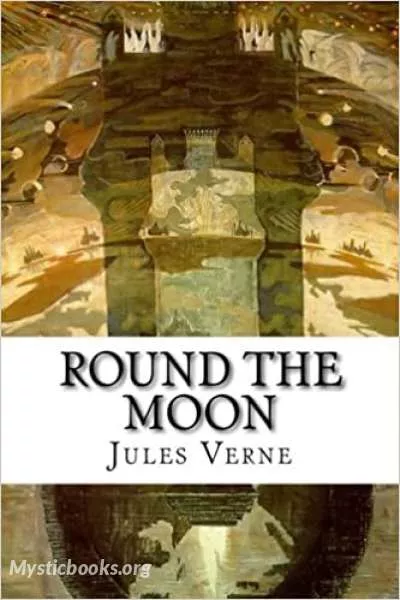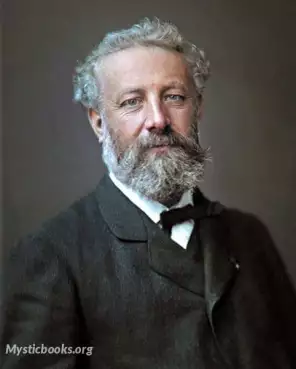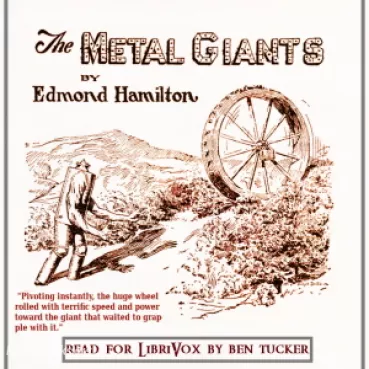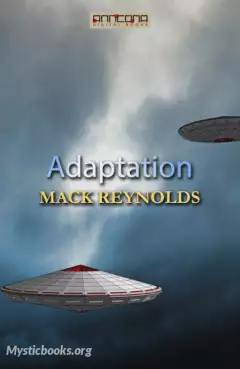
Round the Moon: A Sequel to From the Earth to the Moon
by Jules Verne
'Round the Moon: A Sequel to From the Earth to the Moon' Summary
Having been fired out of the giant Columbiad space gun, the Baltimore Gun Club's bullet-shaped projectile, along with its three passengers, Barbicane, Nicholl and Michael Ardan, begins the five-day trip to the Moon. A few minutes into the journey, a small, bright asteroid passes within a few hundred yards of them, but does not collide with the projectile. The asteroid had been captured by the Earth's gravity and had become a second moon.
The three travelers undergo a series of adventures and misadventures during the rest of the journey, including disposing of the body of a dog out a window, suffering intoxication by gases, and making calculations leading them, briefly, to believe that they are to fall back to Earth. During the latter part of the voyage, it becomes apparent that the gravitational force of their earlier encounter with the asteroid has caused the projectile to deviate from its course.
The projectile enters lunar orbit, rather than landing on the Moon as originally planned. Barbicane, Ardan and Nicholl begin geographical observations with opera glasses. The projectile then dips over the northern hemisphere of the Moon, into the darkness of its shadow. It is plunged into extreme cold, before emerging into the light and heat again. They then begin to approach the Moon's southern hemisphere. From the safety of their projectile, they gain spectacular views of Tycho, one of the greatest of all craters on the Moon. The three men discuss the possibility of life on the Moon, and conclude that it is barren. The projectile begins to move away from the Moon, towards the 'dead point' (the place at which the gravitational attraction of the Moon and Earth becomes equal). Michel Ardan hits upon the idea of using the rockets fixed to the bottom of the projectile (which they were originally going to use to deaden the shock of landing) to propel the projectile towards the Moon and hopefully cause it to fall onto it, thereby achieving their mission.
When the projectile reaches the point of neutral attraction, the rockets are fired, but it is too late. The projectile begins a fall onto the Earth from a distance of 260,000 kilometres (160,000 mi), and it is to strike the Earth at a speed of 185,400 km/h (115,200 mph), the same speed at which it left the mouth of the Columbiad. All hope seems lost for Barbicane, Nicholl and Ardan. Four days later, the crew of a US Navy vessel, Susquehanna, spots a bright meteor fall from the sky into the sea. This turns out to be the returning projectile. A rescue operation is assembled, intending to raise the capsule from a depth of 20,000 feet, using diving bells and steam-powered grappling claws. After several days of fruitless searches, all hope is lost and the rescue party heads home. On the way back, a lookout spots a strange shining buoy. Only then the rescuers realize that the hollow alluminium projectile had positive buoyancy and thus must have surfaced after impact. The 'buoy' turns out to be the projectile and three men inside are found to be alive and well. They are treated to lavish homecoming celebrations as the first people to leave Earth.
Book Details
Language
EnglishOriginal Language
FrenchPublished In
1873Authors

Jules Verne
France
Verne is considered to be an important author in France and most of Europe, where he has had a wide influence on the literary avant-garde and on surrealism. His reputation was markedly different in an...
Books by Jules VerneDownload eBooks
Listen/Download Audiobook
- Select Speed
Related books

Ten From Infinity by Paul W. Fairman
In "Ten From Infinity" by Paul Warren Fairman, a gripping intergalactic thriller unfolds as a mysterious group of extraterrestrial beings descends upo...

The Sensitive Man by Poul William Anderson
In the year 2100, humanity has colonized the galaxy, and telepathy is a common ability. However, some people, known as sensitives, have heightened tel...

Last Call for Sector G by Leigh Brackett
The story revolves around a group of survivors who are fighting to stay alive in the aftermath of a global catastrophe. They are forced to live in a s...

The Metal Giants by Edmond Hamilton
It follows the adventures of a young engineer named Cliff Sutherland. When a new metal is discovered that can revolutionize the industry, Cliff is sen...

Fire People by Ray Cummings
The book "Fire People" is a science fiction novel that explores the possibility of intelligent life existing on the planet Mercury. Professor Newland,...

Adaptation by Mack Reynolds
In 1960 when this was published, the Cold War was at its height. Communism and Free Enterprise (Democracy) were locked in a ferocious struggle to prov...

Badge of Infamy by Lester Del Rey
Badge of Infamy is a juvenile science fiction novel written by American writer Lester del Rey. It was published by Galaxy Science Fiction Novels in 19...

Voodoo Planet by Andre Norton
Voodoo Planet is a science fiction novel by American writer Andre Norton, first published in 1959 by Ace Books. This is a short novel that was usually...

Life in a Thousand Worlds by William Shuler Harris
A jolly romp, which could be perhaps be described as Gulliver’s Travels Through Our Solar System and Beyond, as written by a great admirer of C. S. Le...

Wunderwelten by Friedrich Wilhelm Mader
In 'Wunderwelten', readers embark on a fantastical voyage through the cosmos alongside Lord Flitmore. The story weaves a captivating narrative of inte...
Reviews for Round the Moon: A Sequel to From the Earth to the Moon
No reviews posted or approved, yet...